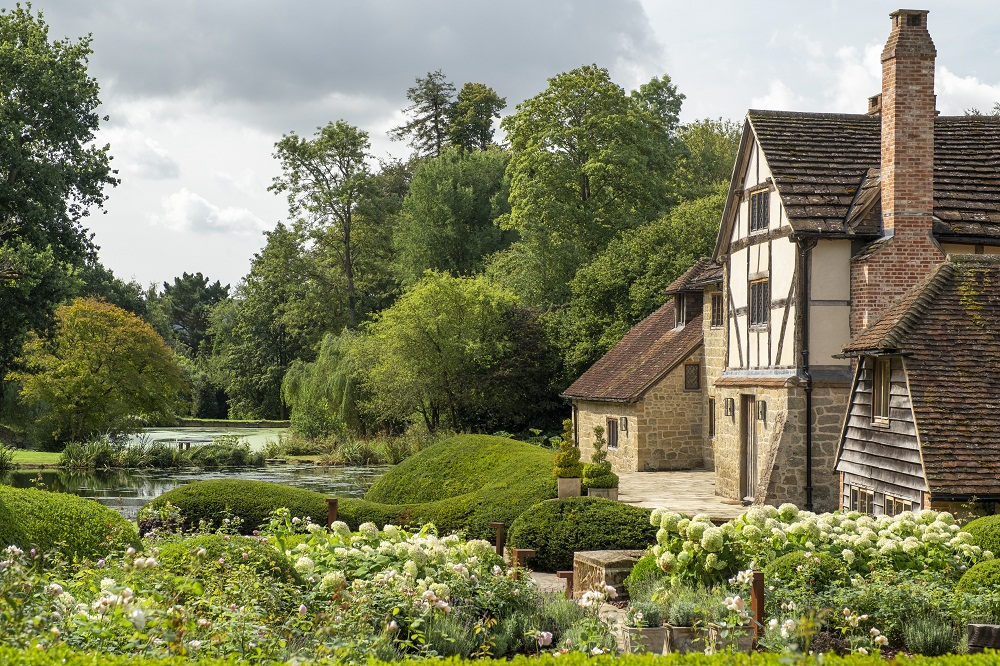Largely consumed domestically, English sparkling wines are increasingly available in Singapore and pouring at a restaurant near you. We explore the rise of this new wine region.

It took a fair bit of convincing and the “best of British luck” for Vinodhan Veloo, ex-sommelier at Odette, to place an English sparkling wine on the hallowed Champagne trolley of the three-Michelin-starred French restaurant.
As Vinodhan (now of Cloudstreet) remembers, “Being a French restaurant, there was a little bit of a pushback.” But his belief in the quality and potential of Nyetimber Blanc de Blancs 2010 won some sceptics over, with his British boss helping him tip the scales. It was the only non-Champagne wine to have ever made it to the trolley.

HILLS OF CHALK
Long a nation of wine drinkers, England turned to sparkling winemaking 30 years ago. A climate change-enabled warmer growing season, running from April through October, made English viticulture possible. Viticulture is a fast-growing sector with 3500 hectares of vineyards stretching mainly over the South East counties of Kent, Surrey, East and West Sussex and more cropping up at a steady pace. Chalk is the preferred soil, though not all vineyards are planted on it; limestone, greensand, and clay soil also abound. The grapes of Champagne – pinot noir, pinot meunier and chardonnay – thrive on south-facing British slopes of low elevation sites, which maximise exposure to the sun and optimise ripening. Emulating the best practices from across the channel, English winemakers use the traditional method (used in Champagne) to craft their wines.
The nascent viticultural region is at roughly the same latitude and boasts chalk fields like those found in Champagne, but there are vital differences. The first is the length of the growing season. “Even though the growing season is slightly cooler than Champagne, it’s longer, about two to two and a half weeks longer. It allows us to develop a little bit more complexity in the flavour profile,” Simon Roberts, director of winemaking at Ridgeview winery, explains. Ridgeview owns 5.8ha of vines in East Sussex and sources fruit from about a dozen long-term contracts with growers.
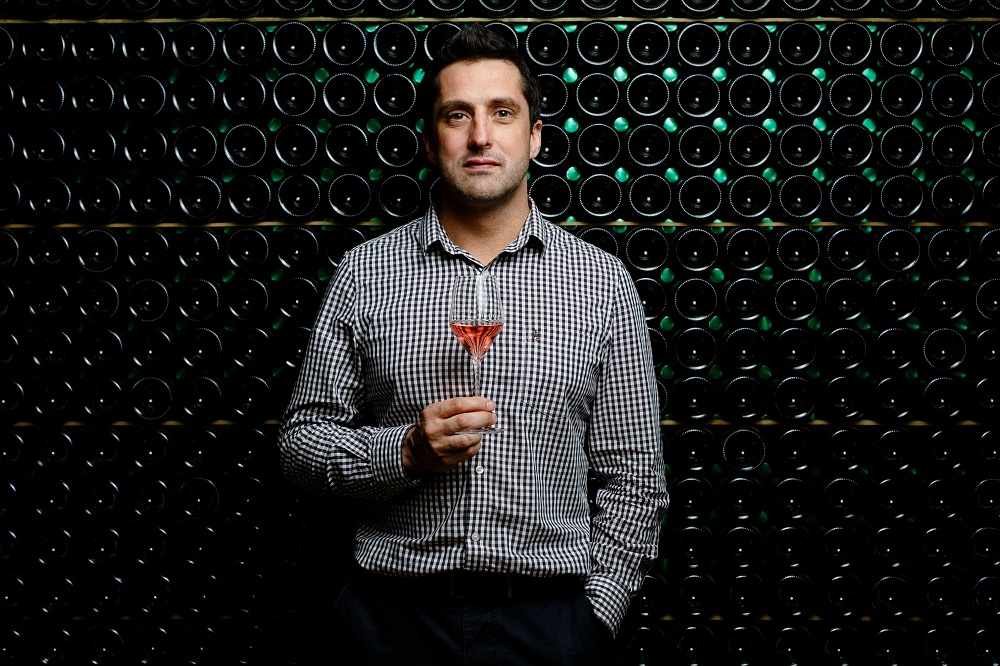
Charlie Holland, head winemaker and CEO at Gusbourne, a 230ha winery spread over Appledore, Kent and Sussex, highlights the wider planting density as another differentiating factor. The vines are planted at 1.5 to 2m apart, much wider than other premium wine regions, and canopies kept 2m tall to allow more sunlight to hit the bunches.
The key viticultural challenge for English vineyards is yield variation. The marginal climate and unpredictable weather results in highly varying crop sizes - from 6hl/ha to 46hl/ha, as was the case in 2018, the bumper year. An abundant vintage, although welcomed, poses its challenges. Even a bigger winery like Ridgeview, projected to produce 500,000 bottles this year, had to rent additional tanks to keep up with the produce in 2018. “We had to stop the grape harvest for three days so the winery could catch up,” he says.
MARKING THEIR OWN
Stylistically, English bubbles sport a marked acidity, a signature of English grapes. The elevated acidity, in most vintages, is balanced by the physiological ripeness gained from the long growing season. “We tend to have more of this kind of orchard fruit and zippy freshness than you would find in Champagne,” says Laura Rhys, global ambassador for Gusbourne.
Stainless steel tanks are the preferred winemaking equipment with judicious use of oak. As Holland explains, “English wine is like a donut. It starts with a great attack and a lovely length, but the wines can be a bit thin in the middle and leaves a hole in the mid-palate. We use oak to plump it up and give a bit of weight in the middle of the palate. Old oak is good at doing that; it adds texture components without adding any oaky flavours. We use 2 to 3% new oak, which adds a bit of spice.”
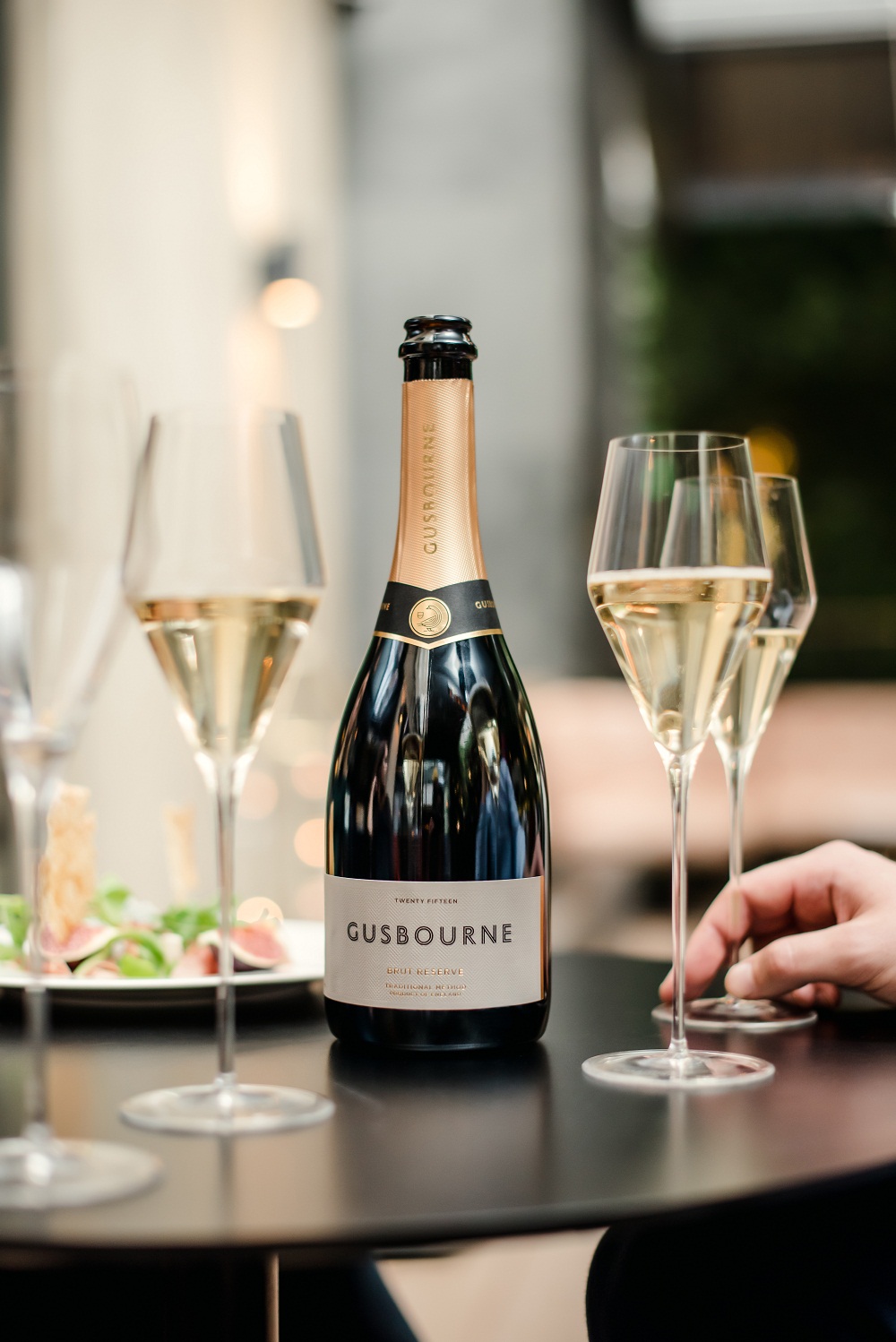
Reserve wines, usually comprising 10 to 30% of the final blend, are used to bring consistency and to add further complexity. In the early days, however, most producers had no such reserves. They started with vintage wines instead – blanc de blancs, blanc de noir and rosé being the main styles. In time, they built up reserves, and non-vintage styles emerged. Now, producers are finding single vineyard sites worth celebrating and boldly experimenting with new techniques. For example, Nyetimber’s recently launched Cuvee Chérie, a Chardonnay based demi-sec wine with 38g/l residual sugar; Ridgeview’s Oak Reserve NV, an oak-fermented sparkling chardonnay introduced in 2017; and Gusbourne’s late disgorged blanc de blancs (usually produced in cooler vintages like 2007).
COMING OF AGE
The production of British fizz crossed the 10 million bottle milestone in 2018 and is tipped to grow to 40 million by 2040. It might be a drop in the ocean compared to Champagne’s annual production of 302 million bottles; however, at industry awards, the wines have dazzled many with their astounding performance.
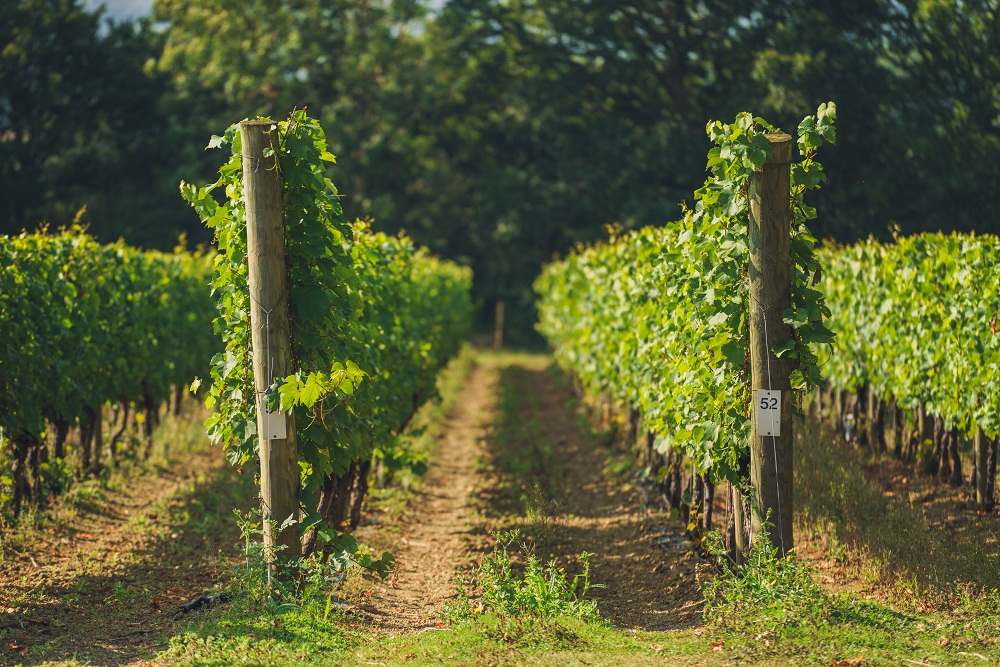
Nyetimber was the first to win awards in the 1990s. Others followed suit. In 2010, Ridgeview took the trophy in the best sparkling wine category at Decanter World Wine Awards. Roberts recalls the change that came with it. “In 2010, the English wine industry was tiny. Most people in England hadn’t heard of wine being produced in England, let alone internationally. And because of that award, the whole world became interested.” He adds, “I think that week was a critical turning point.” Their export inquiries grew. “We were exporting to Norway at that point. By the end of the week, we picked up another three markets.” English wines are currently exported to over 25 countries.
British producers have since picked up many coveted international awards; had their wines poured at state banquets at Buckingham Palace sealing England’s place in the sparkling wine sphere. As if the region needed more affirmation, Grandes Marques houses of Champagne, namely Taittinger (under the name Domaine Evremond) and Pommery have each established an outpost and will soon be producing English wines.

Viticultural consultant and regional chair of Decanter World Wine Awards UK, Stephen Skelton MW, has been involved with English winemaking since the beginning. He says that with low PH levels and high acidity, the wines are built for ageing.
As producers introduce more cuvées with higher prices, the question of price comes to fore. Skelton strongly believes that the price of English sparkling wines is a direct reflection of the quality of the wine. But then, there’s also positioning. “Why pitch it halfway between Prosecco and Champagne. Is it half as much better than Prosecco and not as good as Champagne?” Simon Roberts draws the cost of winemaking into the discussion. “We are still a young industry, and we don’t have the infrastructure that allows countries like France, Italy, Spain to have that reduction in production costs.”
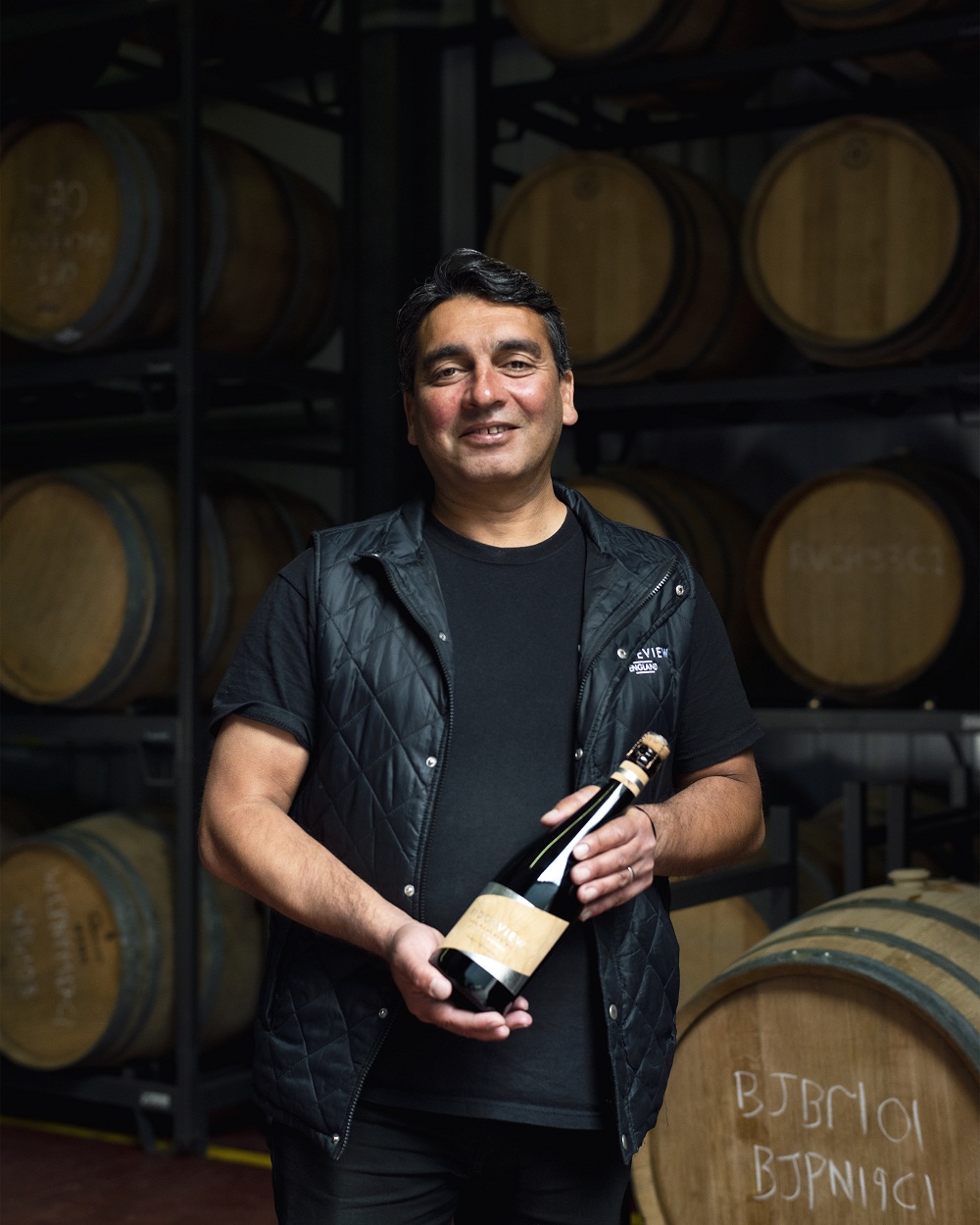
ON OUR SHORES
Although a small market, Singapore brings in the key players of England – Nyetimber, Gusbourne, Ridgeview, Wiston Estate, Balfour Hush Heath – with notable Singapore restaurants adding them to their wine lists.

Nyetimber is the leading exporter to Asia. Murray Lang, export manager for Asia Pacific says, “First and foremost, I’m flying the flag for Nyetimber. But I suppose, because there are so few English sparkling wines and English wines available in Asia, I indirectly fly the flag for the whole category at the same time as well.”
While current restrictions prevent him from travelling overseas, he has pitched said flag firmly in Hong Kong (where he is based), Singapore and Japan. “Singapore and Hong Kong are very much showcase markets for Asia. Having your brand well established in these two markets can put you on a pretty good footing in terms of building awareness for other countries.”
Traditionally, Singapore is a Champagne-centric market. “Sommeliers are spoilt for choice for Champagnes, as are consumers,” says Lang. He recognises the importance of sommelier recommendations and conducts industry tastings across Asia. “Singapore and Hong Kong sommeliers are extremely well respected, so consumers will go with their recommendations.”

His efforts are bolstered by The British Beverage Company in Singapore, owned by husband-and-wife team Mike and Winnie Parsons, who champion the English wine industry by exclusively importing “Made in England” wines from producers like Ridgeview and Wiston Estate. Winnie Parsons says, “A lot of times, wine drinkers and even sommeliers are open to trying new things. And I think that’s a great start”. The Parsons are educating their clients and converting restaurants, like Irish fine-dining establishment Cure, one case at a time.
Building awareness seems to be the way forward, both domestically and internationally, as many consumers remain unaware of England’s winemaking prowess. Although English wine is still a novelty for some, it may not remain so for long. As Murray says, “When you put a glass of the product into someone’s hand and you have them taste it, the immediate realisation is – this is really good.”
